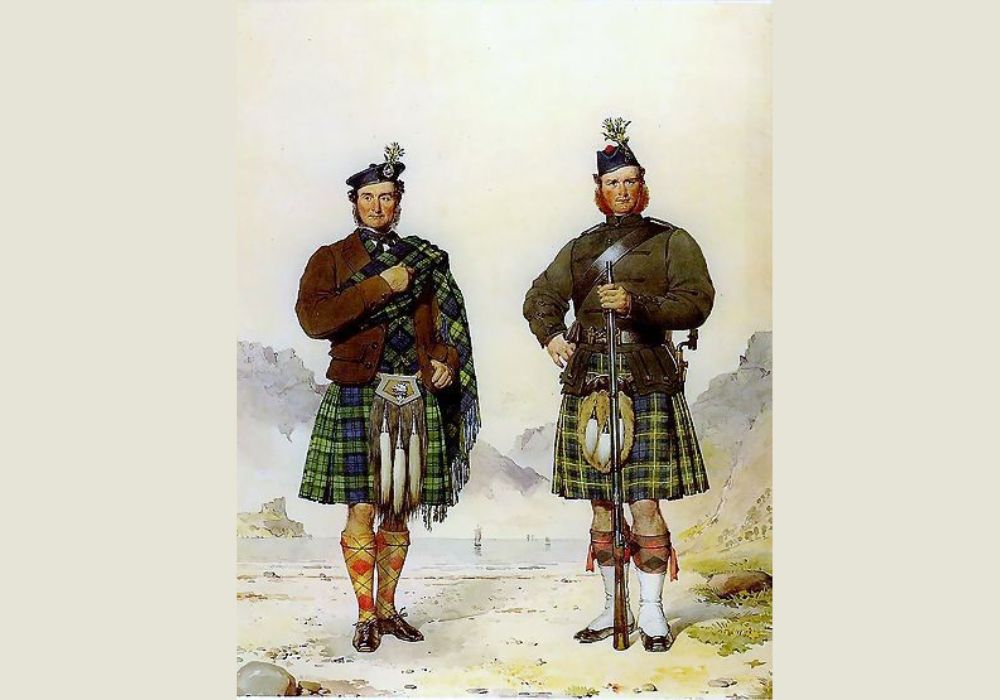Posted by Maris on 13th Nov 2023
Why tartan is a symbol of both rebellion and sophistication
How did highland dress evolve from a historic emblem of defiance to a global brand beloved by both visitors and designers?
Clash of clans
Charles departed Scotland in 1746, never to return, and Britain is still ruled by the Protestant monarchy he was unable to dethrone. Despite being vanquished on the battlefield, tartan lives on not only in Scotland, but all across the world. So, how did this Highland garb become a worldwide brand?
"It's always been a really partisan cloth," says Viccy Coltman, Professor of Art History at Edinburgh University. "That's part of its whole history."

Highland attire was outlawed in Scotland after Culloden, and tartan went underground. However, prohibiting something always elevates it to cult status, and when the prohibition was abolished in 1782, tartan became quite fashionable. The urban nobility and the expanding middle classes drove this resurgence, rather than grass-roots activists. "In the wake of '45, you really see the beginnings of a souvenir industry," Coltman said. And the most avid souvenir hunters were not the defeated Highlanders, but the Lowland Scots who assisted in their downfall.
With King George IV's visit to Edinburgh in 1822, this carpet-bagging reached a climax. Walter Scott, whose historical books contributed significantly to the creation of an internationally romantic picture of Scotland, orchestrated his visit. Scott organized a grand procession through the streets of Edinburgh, led by tartan-clad Highland chiefs. King George even had a kilt portrait made of himself. Tartan was no longer a menace. Its rehabilitation (and disempowerment) was complete after it was stripped of its seditious power.

Queen Victoria continued to wear tartan in official pictures during her annual visits to Balmoral. Scotland had been changed from a lethal foe to a popular tourist destination. Tartan has become a vital part of the country's new identity. Tartan was now synonymous with 'Made in Scotland,' adorning all manner of tourist trinkets.
A new national garb arose as a result of cod mythology and cunning marketing.
There were just a few tartan types until the 19th century, but now that tartan was so common, every Scottish family wanted its own tartan. The diversity of tartans we know today was made by modern machinery, not old ancestors. Mechanisation allowed for the fabrication of infinite variations, and mass production satisfied the desire for a greater choice of styles. When a consumer with a Scottish surname chooses a tartan, perhaps one linked with a specific region, the provider sells it to another customer with the same surname. "It's all about commercial acumen," explains David Forsyth, curator of Bonnie Prince Charlie and the Jacobites. A new national attire arose from cod mythology and cunning marketing.

Tartan was substantially different from the Highland dress of the 18th century by the end of the 19th century. Modern tartan, which was machine-made rather than hand-woven, was less expensive and more versatile. It had evolved from a Highland cloth connected with the Catholic cause to a mark of loyalty to Britain's Protestant rule.
Rebel rebel
The British Empire popularized tartan over the world. Tartan was worn by Scottish regiments, solidifying its martial imagery, while British merchants marketed tartan textiles all over the world. Tartan was at once strange and familiar, threatening and respected. It could be worn by an outsider or a member of the status quo.
Despite the demise of the British Empire, tartan is more popular than ever, with British designers and fashionistas using it as inspiration all over the world. Tartan has conquered youth culture, with New Romantics wearing kilts and punk rockers wearing tartan bondage trousers. It has conquered both street fashion and elite couture, from Vivienne Westwood to Alexander McQueen.
It's a symbol of rebellion and sophistication, just like all the best brands.

It also has a kitsch, kiss-me-quick appeal. Tartan adorns the various gift shops along Edinburgh's Royal Mile. Rod Stewart, like Bonnie Prince Charlie before him, wore tartan to boost his Scots credentials, and fiftysomething Scots still shudder at the recollection of the Bay City Rollers, Scotland's first boy band, in their tartan flares.
"Uniform and costume have always been inspirational," says Fiona Joseph, Condé Nast Traveller's fashion and beauty director. "It stretches across all of the fashion industry." Tartan isn't only a British thing for Jonathan Anderson and Stella Tennant. Tartan is also a favorite of the legendary French fashion brand Chanel.
"History is written by the victors," argues curator Forsyth, "but victors don't need icons." Losers create love myths and the romantic costumes that go with them. That is why tartan has become so popular. Although Bonnie Prince Charlie lost the Battle of Culloden, he triumphed in the fashion war.


